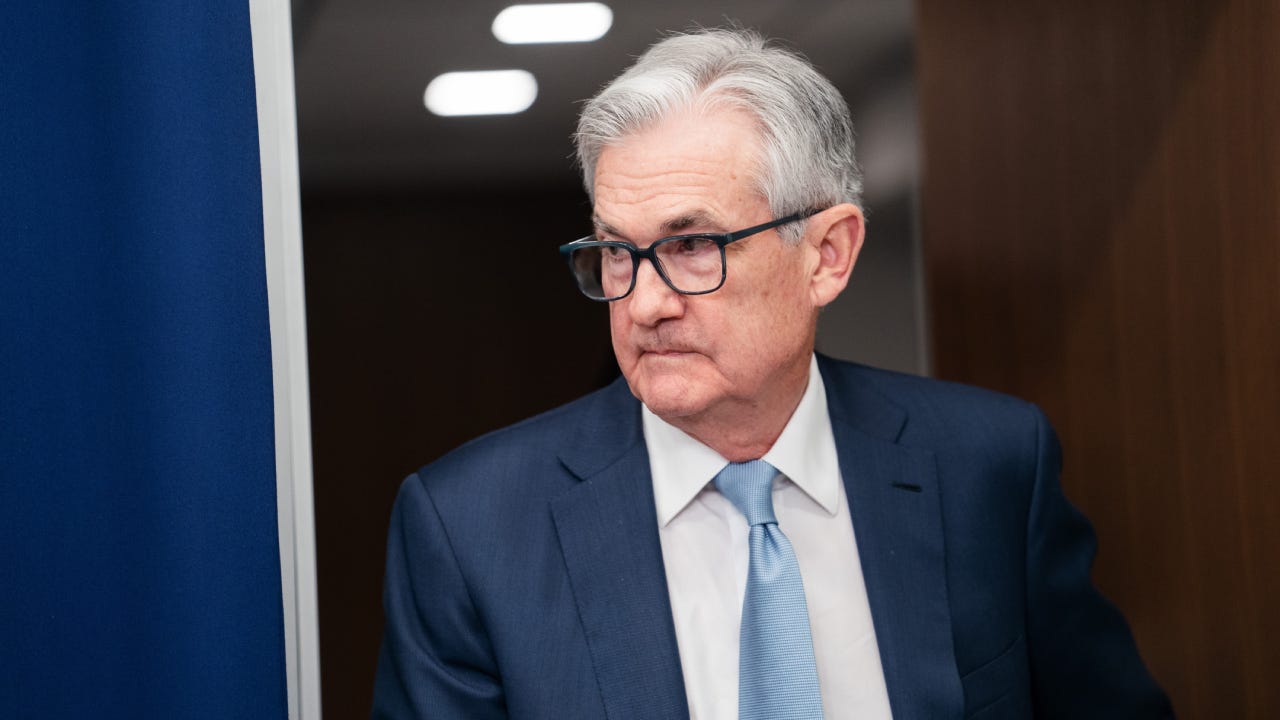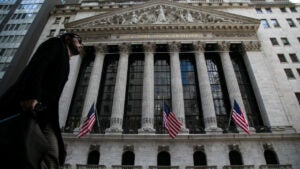Survey: 10-year Treasury yield to rise even higher over the next year, experts say

Market experts surveyed by Bankrate expect Treasury yields to slightly increase over the next 12 months as the Federal Reserve continues to hike interest rates as part of its plan to bring down inflation. The Fourth-Quarter Market Mavens survey found that investment professionals see the 10-year Treasury yield at 3.8 percent a year from now, up from 3.58 percent at the end of the survey period on Dec. 9, 2022.
The survey’s respondents were nearly split on whether rates would be higher or lower a year from now. Their specific forecasts ranged from 3.1 percent to 5 percent.
Most analysts recommended investors stick to their long-term investment plans, though some did suggest increasing bond allocations as interest rates are more attractive than they’ve been in several years.
Forecasts and analysis:
This article is one in a series discussing the results of Bankrate’s Market Mavens fourth-quarter survey:
- Pros expect modest rally in stocks over the next year despite growing recession fears
- 10-year Treasury yield to rise even higher over the next year, experts say
- Here’s when pros see the next bull market arriving and whether crypto can make a comeback
Investment pros expect 10-year yield to rise slightly in the coming year
The 10-year Treasury yield has spent most of the past two decades below 5 percent, but it reached record lows during the COVID-19 pandemic as the Federal Reserve cut interest rates to support the economy. When it finally reached its bottom in August 2020, the 10-year yield had fallen to about 0.50 percent. But rates began to climb as the economy recovered and have continued climbing alongside Fed rate hikes in 2022.
Market analysts surveyed by Bankrate expect the 10-year Treasury yield to be 3.8 percent by the end of 2023, up from the 3.6 percent level they expected it to reach by the end of the third quarter of 2023, as indicated in the previous survey.
The fourth quarter survey period took place just prior to the Fed’s latest half-point rate hike on Dec. 14. It was the seventh consecutive rate increase by the Fed and brings interest rates to levels not seen in around 14 years.
Estimates have generally tracked the overall rise in interest rates, with expectations increasing from 2.19 percent in the fourth quarter 2021 survey to 3.6 percent in the third quarter 2022 survey.
What should long-term investors do if the Fed keeps rates higher for longer?
As the Fed signals that it may keep interest rates high for a longer period of time, Bankrate asked the market experts what a long-term investor should do and whether that advice would change if it became clear the Fed was done raising rates. Most analysts said investors should stick to their long-term plans and not react to changes in Fed policy, but some said they’re seeing opportunities in bonds that haven’t been available in many years.
“As the Fed’s expected to pause next year but keep rates high, yields on fixed-income investments are some of the most attractive in decades,” says Dec Mullarkey, managing director of investment strategy and asset allocation at SLC Management. “Allocating more to fixed income should increase the opportunity for stable income.”
Sameer Samana, senior global market strategist at Wells Fargo Investment Institute, says investors should take advantage of higher rates while they last.
“We would advise investors to slowly begin lengthening the maturity of their fixed income portfolios to lock in these higher long-term interest rates,” says Samana. “Once the Fed gets closer to being done, there may be opportunities to take on credit and equity risk.”
But other analysts suggested taking a more measured approach, highlighting the importance of sticking to your financial plan.
“The average long-term investor should be dollar-cost averaging into the stock market,” said Patrick O’Hare, chief market analyst at Briefing.com. “That takes the guesswork out of when a change in policy might happen, but sets one up to enjoy stronger returns by acquiring stocks at lower prices that have been induced by the spike in rates.”
Michael Farr, chief market strategist at Hightower Advisors, says it’s normal for long-term investors to experience difficult market environments as well as periods of economic growth and expansion. “Focus on the long term and stay the course,” he said.
Methodology
Bankrate’s fourth-quarter 2022 survey of stock market professionals was conducted from Dec. 1-9 via an online poll. Survey requests were emailed to potential respondents nationwide, and responses were submitted voluntarily via a website. Responding were: Jim Osman, founder, The Edge Group; Dec Mullarkey, managing director, SLC Management; Sam Stovall, chief investment strategist, CFRA Research; Michael Farr, CEO, Farr, Miller & Washington; Hugh Johnson, chief economist, Hugh Johnson Economics; Patrick J. O’Hare, chief market analyst, Briefing.com; Chuck Carlson, CFA, CEO, Horizon Investment Services; Louis Navellier, CIO, Navellier & Associates, Inc.; Kim Forrest, chief investment officer/founder, Bokeh Capital Partners; Charles Lieberman, managing partner and chief investment officer, Advisors Capital Management; Kenneth Chavis IV, CFP, senior wealth manager, LourdMurray; Sameer Samana, senior global market strategist, Wells Fargo Investment Institute; Brad McMillan, chief investment officer, Commonwealth Financial Network; Marilyn Cohen, CEO, Envision Capital.
Editorial Disclaimer: All investors are advised to conduct their own independent research into investment strategies before making an investment decision. In addition, investors are advised that past investment product performance is no guarantee of future price appreciation.






